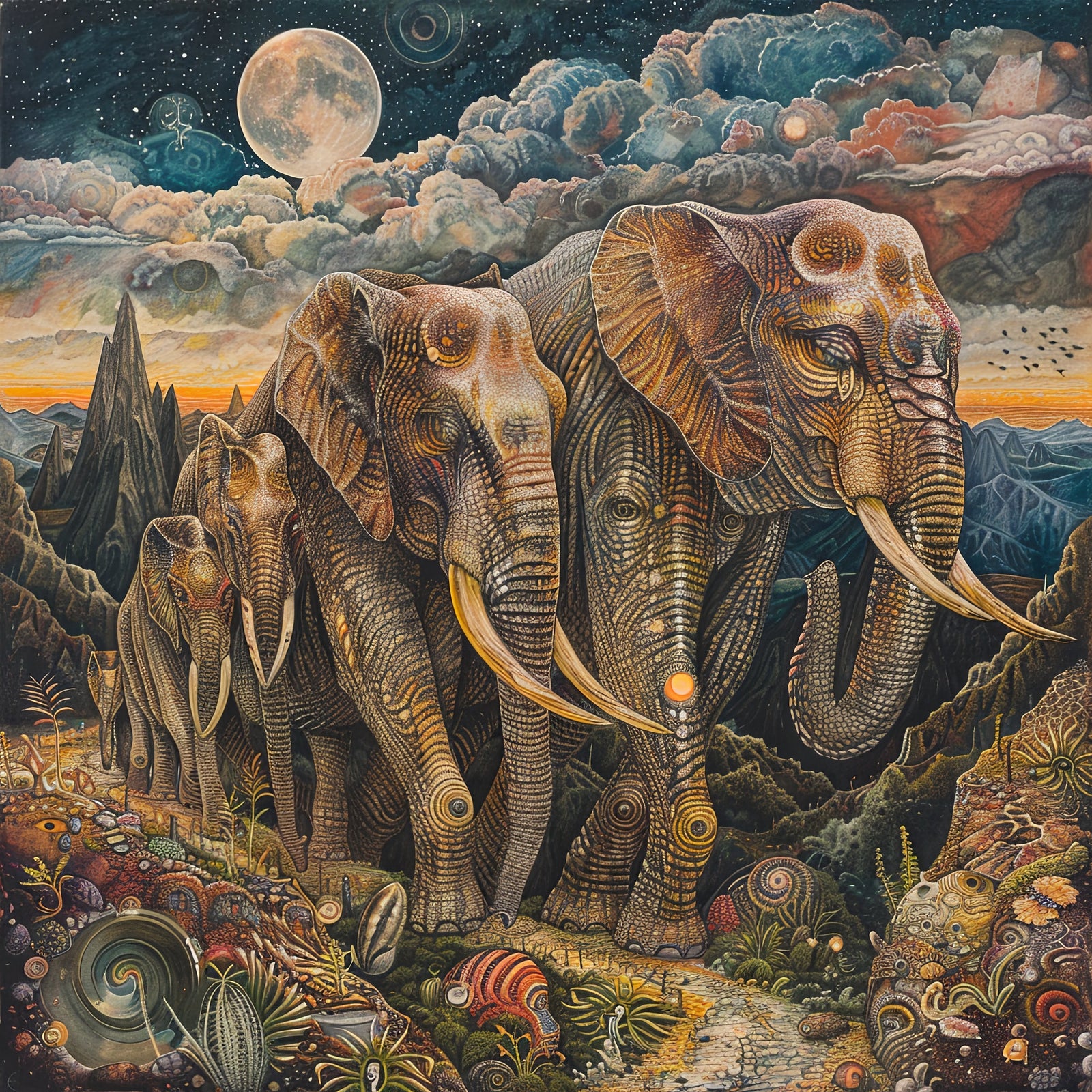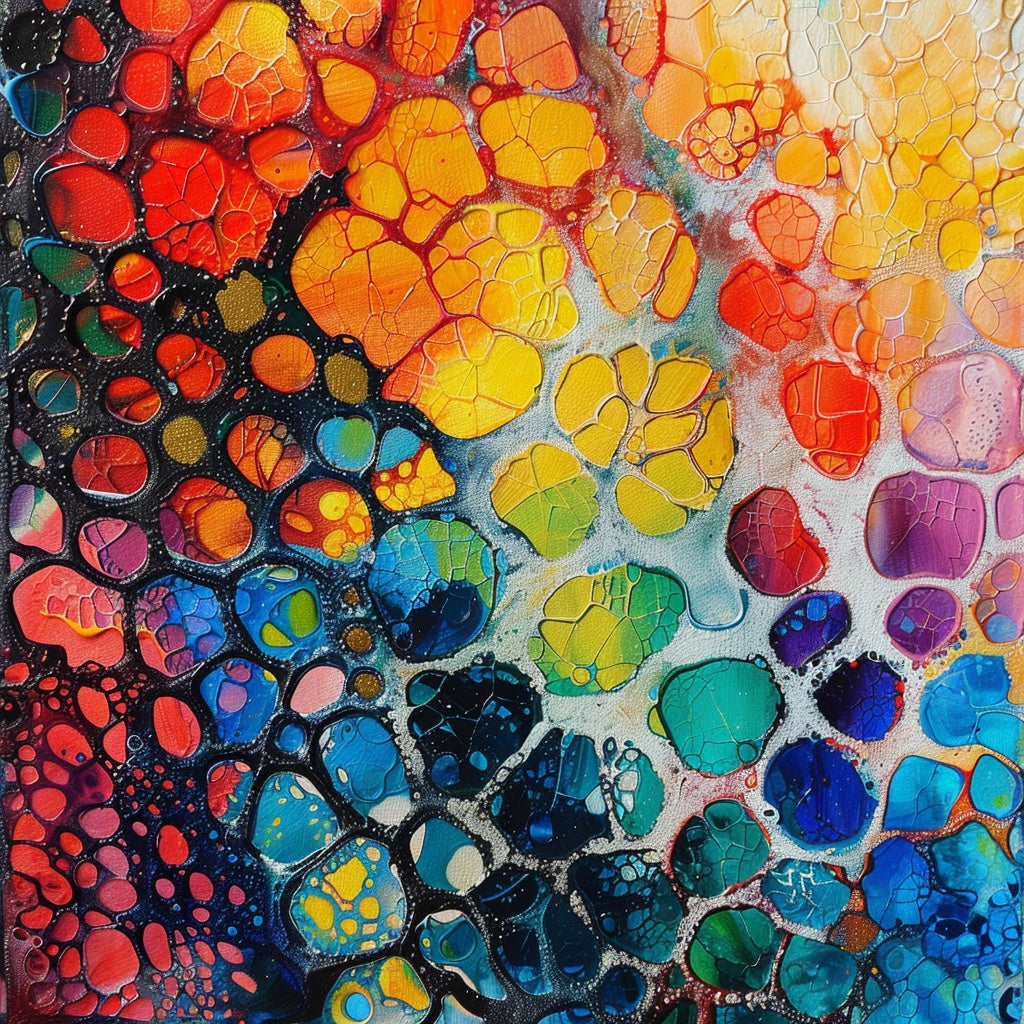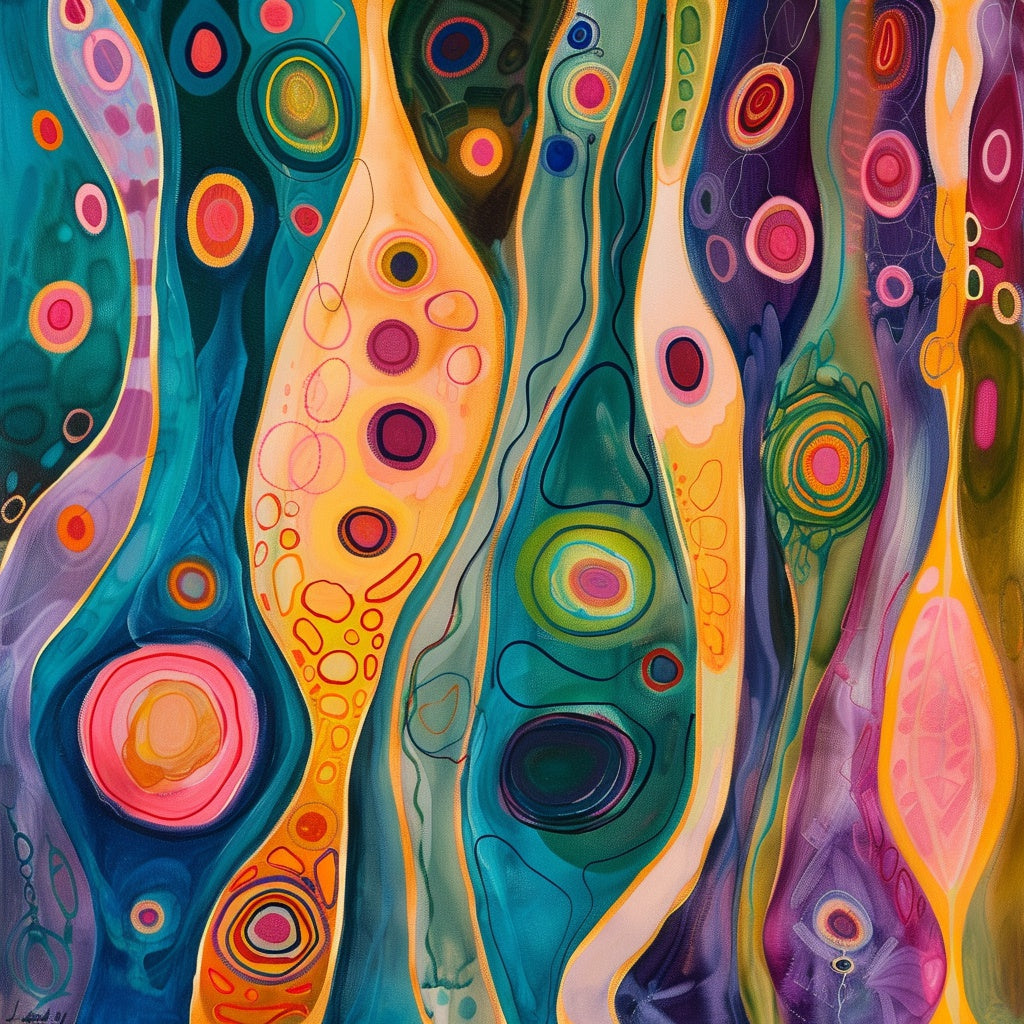Detecting AI-Generated Art
The art world is experiencing a revolution with the rise of AI art generators like DALL-E 2, Midjourney, and Stable Diffusion [1]. These tools enable the creation of impressive visuals with minimal effort, thereby blurring the lines between human and artificial creativity [1, 2]. This blog post will equip you with the knowledge to distinguish between art crafted by a human and art conjured by an algorithm.
Table of Contents
- Understanding AI Art Generation Technology
- Visual Clues: Spotting the Algorithmic Fingerprint
- Text and Composition: Decoding the AI's Visual Language
- Tools and Techniques: Unveiling the Digital Trail
- Limitations of AI Art Generation
Understanding AI Art Generation Technology
Before examining how to spot AI art, it's crucial to understand how it's made. AI art generators use various AI models to produce images. Here are the primary types:
Generative Adversarial Networks (GANs)
GANs employ two neural networks: a generator and a discriminator [2]. The generator creates images, while the discriminator evaluates them, trying to distinguish between real and AI-generated images. This process helps the system learn to produce more realistic outputs [2]. Imagine it like an art forger (the generator) trying to create a painting that can fool an art expert (the discriminator). The forger gets better with each attempt until their art is almost indistinguishable from real paintings.
Variational Autoencoders (VAEs)
VAEs utilize an encoder and a decoder network [2]. The encoder compresses input data into a smaller representation, and the decoder reconstructs it, allowing VAEs to create variations of existing images [2]. Think of it as a machine that takes a photo, extracts the core elements, and then recreates similar, but not identical, photos.
Diffusion Models
Diffusion models gradually add noise to an image until it becomes unrecognizable. The model then learns to reverse the process, starting from pure noise and refining it into an image [2]. This method is increasingly popular for generating high-quality images with fine details [1]. Consider this like starting with a blurry image and slowly bringing it into focus; the model learns to take the blurred mess and turn it into a clear picture.
These AI models are trained on vast datasets of images and text, learning relationships between visual elements and concepts. This enables them to generate new images based on user prompts [3].
Visual Clues: Spotting the Algorithmic Fingerprint
While AI art is becoming more sophisticated, it often leaves behind subtle visual clues. Here are some key indicators:
Unnatural or Inconsistent Elements
AI algorithms can struggle with accurately representing the complexities of the real world. Look for:
- Anatomical Inconsistencies: Mismatched eyes, extra fingers, or distorted limbs [3, 4]. Hands are particularly challenging for AI to render realistically [3, 5]. For example, you might see a portrait with a hand that has six fingers, or a figure with two different colored eyes that don’t quite match.
- Perspective Problems: Look for inconsistent perspective and impossible architecture [5]. Buildings might have warped walls or repeating elements that don’t quite align as they would in real life.
- Excessive Detail: AI-generated images might have an extremely high resolution and intricate detailing that would be difficult for a human artist to achieve, resulting in an "uncanny valley" effect, where the image seems almost too perfect [3, 6]. The image may look too smooth, without the imperfections that often come with human artistry.
Unusual Textures and Patterns
AI-generated images often exhibit peculiar textures, especially in:
- Skin: It might appear overly smooth or have a plasticine quality [7]. The texture may seem too perfect, lacking the natural imperfections of real skin.
- Hair: It may have inconsistent textures or blend unnaturally with other elements [7]. Strands of hair may not flow naturally, or the texture may appear artificial.
- Repetitive Patterns: Textures like fur, foliage, or wood might contain repetitive patterns [7]. Instead of varying naturally, the pattern might appear to repeat in an unnatural way.
Lighting and Shadow Anomalies
AI often struggles with accurately depicting light and shadow. Look for:
- Misaligned Shadows: Shadows might not align with the light source [8]. The shadows may fall in the wrong direction or have an unnatural appearance.
- Missing Shadows: Shadows might be missing altogether or appear distorted [8]. Objects may seem to float or not have proper grounding.
- Flat Lighting: The overall lighting can feel flat or lack depth [9]. The image may appear to be lit evenly, without the natural contrast that comes from light and shadow.
Surreal or Dreamlike Elements
AI art generators can create fantastical and surreal imagery [6]. While surrealism is a style, an overabundance of dreamlike elements or bizarre juxtapositions, especially in combination with other visual clues, might suggest AI involvement [4]. For example, the image might include a person flying or an animal with strange colors.
Technical Glitches
AI-generated art can sometimes show technical glitches or artifacts, such as pixelation, blurriness, strange color gradients, or unnatural edges [4]. These can be signs of the algorithm's limitations.
Watermarks
Some AI art generation tools add watermarks to their output, which can be small logos, text, or subtle patterns embedded in the image [10]. While not all AI-generated images have watermarks, their presence indicates AI involvement.
Text and Composition: Decoding the AI's Visual Language
Beyond individual elements, the way AI composes an image can provide clues. Here are some compositional and textual indicators:
Textual Errors
AI often struggles with generating coherent text within images. Look for misspelled words, garbled letters, or nonsensical characters [5]. Even if text looks legible, closer inspection may reveal inconsistencies. For example, the text may be a string of randomly chosen letters.
Symmetry and Geometry
AI may struggle with symmetry and geometry, especially in architectural elements [5]. Buildings might have warped walls, misaligned columns, or inconsistent repeating elements.
Compositional Oddities
Human artists often compose images with intentional meaning, while AI may produce compositions that seem random or lackluster in their artistic intent [4]. If an artwork feels "off" or lacks a clear focal point, it might be AI-generated. It may lack a sense of balance or purpose in the arrangement of elements.
Limited Camera Angles
AI-generated images often feature a flat, head-on camera angle, similar to the "American plan" in film and television [9]. This limited perspective can indicate the algorithm's difficulty with three-dimensional space. It may lack the dynamic angles that a human artist might use.
Tools and Techniques: Unveiling the Digital Trail
Several tools and techniques can help further investigate the origins of an artwork:
Reverse Image Search
Tools like Google Images and TinEye allow you to upload an image and search for similar ones online [4]. This can help you identify if the image is a copy, a manipulated version of an existing photo, or if it has been generated by AI.
Metadata Analysis
Examining the metadata of an image file can reveal information about its creation date, software used, and author [4]. If the metadata lacks information about a human artist or seems suspicious, it could indicate AI involvement.
AI Detection Tools
Several online platforms are designed to analyze images and provide a likelihood score for AI generation [4]. While not foolproof, these tools can be valuable resources. Here are a few:
- Hugging Face's "Assembling Machine Learning Art Tool": Analyzes images and provides a likelihood score for AI generation [5].
- Deepware's "AI Art Detector": Analyzes images and provides a likelihood score for AI generation [5].
- BrandWell (formerly Content at Scale): Provides a percentage score of Human vs. AI Probability [5].
- AI or Not: Authenticates images, videos, and voice [5].
- Illuminarty: Provides a probability of AI generation and identifies AI-generated areas within an image [5].
- Hive Moderation: Provides an overall score and identifies the AI engine used to create an image [5].
Expert Opinions
Consulting art experts, curators, or experienced collectors can provide valuable insights [4]. However, even experts can sometimes mistake lower skill in human art for AI generation [11]. Therefore, it's crucial to consider multiple factors when assessing the origin of an artwork.
Limitations of AI Art Generation
Despite the rapid advancements in AI art, there are still limitations:
Reliance on Existing Datasets
AI art generators are trained on vast datasets of existing images. This can limit the originality of AI-generated art [12]. While AI can generate novel variations, it may struggle to break free from the patterns in its training data.
Challenges with Specific Features
As mentioned earlier, AI often has difficulty generating realistic hands, text, and other complex features [13]. This highlights the algorithm's limitations in fully understanding the nuances of the real world.
Evolving Landscape
AI art generation technology is constantly evolving. It will become increasingly challenging to identify AI-generated art with absolute certainty. However, by understanding the current limitations and telltale signs, you can develop a discerning eye.
One interesting concept in the discussion of AI art is "generative synesthesia." This term describes the collaborative process between human exploration and AI exploitation in the creative process [14]. Artists can use AI to generate new ideas, variations, and push creative boundaries [14]. This highlights AI's potential to enhance human artistic expression.
Research also shows that AI art can enhance human creative productivity [14]. By automating certain aspects of the art creation process, AI tools free up artists to focus on higher-level creative tasks. This can lead to new forms of artistic expression.
In conclusion, AI art generators are powerful tools that can democratize creativity and push the boundaries of artistic expression. By learning to identify AI-generated art, we can appreciate both the ingenuity of algorithms and the irreplaceable value of human creativity.
Footnotes
[1] Artificial intelligence art - Wikipedia
[2] What Is AI-Generated Art? | IxDF - The Interaction Design Foundation
[3] What is AI art & how does it work? - Adobe Firefly
[15] What is AI Art? How Art Generators Work (2025) - Elegant Themes
[4] AI Art Exposed: How to Spot the Difference Between Human and AI Creations
[5] 6 Ways to Identify AI-Generated Images (With Examples) - Endertech
[6] emeritus.org
[7] Is that image AI? Here are 14 telltale signs to look for. - Rob Laughter - Medium
[8] Spotting AI-Generated Content: Practical Tips and Analysis | by Mike Onslow | Medium
[9] Why Does All AI Art Look Like That? | by Keith Edwards | Medium
[10] How to Identify AI-Generated Content: Top 4 Ways That Help - Emeritus
[11] Organic or Diffused: Can We Distinguish Human Art from AI-generated Images? - arXiv
[12] AI Art: Exploring the Pros, Cons, and Ethical Dimensions - Vision Factory
[13] AiArt: Why Some Artists Are Furious About AI-Produced Art - IEEE Computer Society
[16] The Ethical Implications of AI on Creative Professionals
[17] All creatives should know about the ethics of AI-generated images | Lummi
[18] The Ethics of AI Art - Center for Media Engagement
[14] Generative artificial intelligence, human creativity, and art | PNAS Nexus - Oxford Academic



Leave a comment (all fields required)